
Welcome to the WeChat subscription number of “Sina Technology”: techsina
Text / Zhou Xiongfei
Source/Link Travel (ID: lianxiachuxing)
In addition to Apple, Nvidia’s annual technology conference is also dubbed the “Spring Festival Gala” by some netizens.
The reason why it is called “Spring Festival Gala” is because at each conference, NVIDIA will come up with new technological breakthroughs or new products in the fields of graphics cards, game encoders and chips. At the GTC Graphics Technology Conference held this week, Nvidia also lived up to its expectations.
At this year’s GTC Graphics Technology Conference, NVIDIA not only released the long-awaited RTX 40 series graphics cards, but also brought graphics architecture software Ada Lovelace, game development tool RTX Remix, industrial cloud service tool Omniverse Cloud service and Nemo LLM series of neural network development tools.
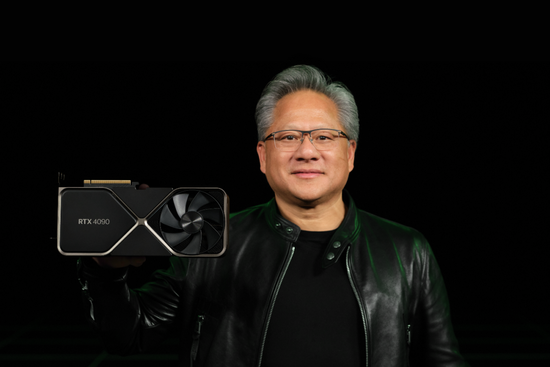 RTX 40 series graphics cards released, picture source NVIDIA official website
RTX 40 series graphics cards released, picture source NVIDIA official websiteJust when all the audiences were excited about the new products in these different fields, NVIDIA dropped a “blockbuster” in the field of autonomous driving – released a new generation of autonomous driving computing platform called “Thor (Thor)”.
According to NVIDIA, a single Thor chip has an AI computing power of 2000 TOPS, which not only surpasses the Atlan chip released last year (the chip has a computing power of 1000 TOPS), but also has become the highest computing power level in the industry.
In addition, the Thor chip is not only an autonomous driving chip, but also has other intelligent control related to the vehicle, such as the infotainment of the smart cockpit. In other words, the Thor chip is not only an autonomous driving domain chip, but also a smart cockpit domain chip.
For a long time, NVIDIA has been focusing on the direction of autonomous driving in the field of chips, and Qualcomm is particularly famous for chips in the field of smart cockpits. For example, new energy car companies such as Weilai, Xiaopeng, Ideal, and Extreme Krypton are all “loyal fans” of Qualcomm’s 8155 chip.
With the release of the Thor chip, it also means that NVIDIA not only sent a gauntlet to autonomous driving chip companies such as Mobileye and Horizon, but also challenged the smart cockpit chip track represented by Qualcomm. Nvidia may be so aggressive, perhaps because it’s already in a quagmire.
Early last month, Nvidia released its results for the second quarter of fiscal 2023. The data showed that both its revenue and net profit declined. The main reason for this decline was that its main business, the game business, was in the second quarter of fiscal 2023. also in a downturn.
In addition to the “internal worries” of the business, Nvidia also has “foreign troubles” in the field of autonomous driving chips. Although many car companies have chosen Nvidia’s chips as the computing platform in their products, chip companies such as Mobileye, Horizon and Black Sesame are still eyeing them, and Nvidia is not safe.
Under the “internal and external troubles”, the anxious Nvidia had to aggressively “sacrifice” the Thor chip, wanting to maintain its own advantages in the industry while taking this opportunity to enter the field of smart cockpits to find new growth points. Can Nvidia realize its own “small abacus”?
Using the Thor chip as a spear, Nvidia declares war everywhere
How to use one chip to realize the role of eight chips?
For this question, Nvidia has given its answer. At the GTC Graphics Technology Conference held recently, NVIDIA released a chip called “Thor”. When NVIDIA CEO Huang Renxun said that the chip’s single computing power reached 2000 TOPS, there were bursts of cheers in the venue. the sound of.
It is normal to have such a reaction. Take NVIDIA’s latest generation Orin chip that has been mass-produced for example. The single chip has a computing power of 254 TOPS. NIO has achieved a computing power level of 1016 TOPS with the help of 4 Orin chips. The model with the highest computing power in the industry.
After the Orin chip, although Nvidia also launched a new generation of autonomous driving chips last year, the Atlan chip, the computing power of a single chip reached 1000 TOPS, which can be said to be the computing power level of four Orin chips. But with the emergence of Thor chips, the computing power of 8 Orin chips has been directly realized.
As a result, the Atlan chip that will be mass-produced in 2025 will likely be replaced by the Thor chip. After all, Huang Renxun said at the press conference that “Atlan is no longer the first… It will be replaced by Thor (Thor)” Replace because Thor has more than twice the throughput and delivery performance of Atlan.”
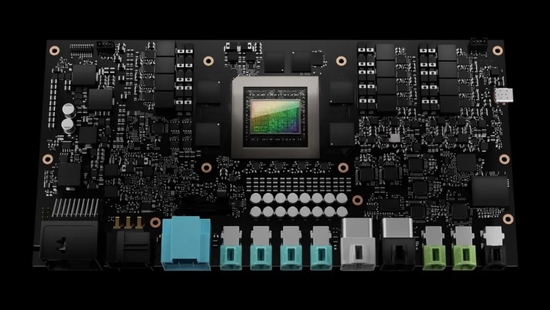 NVIDIA Thor chip, image source NVIDIA official website
NVIDIA Thor chip, image source NVIDIA official websiteIn addition, NVIDIA has also added a Transformer (machine deep learning) model to the Thor chip. Based on this model, the in-vehicle computing platform can realize larger-scale machine learning, thereby improving the recognition and processing capabilities of the in-vehicle system for the external environment.
In order to demonstrate the specific strength of this chip, Huang Renxun released a video at the press conference. The video shows the test vehicle equipped with the Thor chip, which independently completed operations such as operation, perception, decision-making, avoidance, as well as real-time environmental scanning and data collection, etc. Task.
Nvidia will have such a technological breakthrough, perhaps because it has begun its layout in the field of autonomous driving chips very early.
2014 has been recognized by the industry as the “first year” for the development of the new energy vehicle industry. A year later, NVIDIA launched the DRIVE PX, a computing platform for the field of autonomous driving, which is based on the NVIDIA Maxwell GPU architecture.
According to NVIDIA’s introduction at the time, with the help of DRIVE PX vehicles, deep learning and computer vision can be used to form a perception and understanding of the environment, so as to realize basic functions of automatic driving such as automatic cruise and automatic parking.
Since then, NVIDIA has successively launched technical iterative versions based on DRIVE PX, which has also attracted the favor of some car companies, including Tesla. According to Lei Feng.com, every Model S and Model X produced by Tesla after October 2016 is equipped with a Drive PX2 chip.
At GTC Europe in September 2016, NVIDIA released a higher-end Xavier chip than Drive PX2, and in 2020 the Xavier chip was officially mass-produced; then, NVIDIA launched the next-generation computing platform Drive AGX in 2019. Orin.
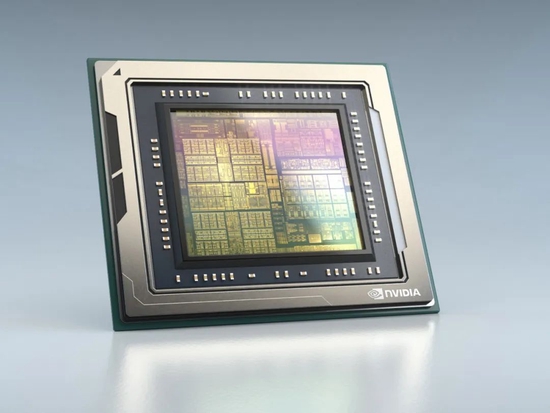 NVIDIA Orin chip, image source NVIDIA official website
NVIDIA Orin chip, image source NVIDIA official websiteIn terms of computing power, the Orin chip will be 7 times that of the Xavier chip, and the overall power consumption of the former will only be twice that of the latter. Due to its excellent performance, Orin soon became the chip chosen by mainstream car companies such as Weilai.
Today, with the introduction of the Thor chip, Nvidia has also gained a lot of attention and a dominant position in the field of autonomous driving chips.
However, Nvidia’s ambitions on the Thor chip don’t stop there.
With the development of the new energy vehicle industry, the field of vehicle intelligence has also developed rapidly. In addition to autonomous driving, intelligent cockpit has also become a crucial industry. Previously, a smart car generally required the support of two or more computing platforms to achieve these two functions.
For example, the three “Weixiaoli” companies used the Q4 chip from Mobileye in the early stage in order to realize the automatic assisted driving function, and then the new models such as the ES7, Xiaopeng G9 and Lili L9 of Weilai adopted the Orin chip of NVIDIA; In terms of smart cockpits, Weilai, Xiaopeng and Ideal also use the 8155 chip from Qualcomm.
In this regard, Huang Renxun also admitted that the current car’s parking, active safety, driver monitoring, camera mirroring, clustering and infotainment are controlled by different computing devices. He also said that with the advent of the Thor chip, these functions will be fully controlled and implemented by this chip in the future.
“Thor’s multi-computing domain isolation allows concurrent, time-sensitive multi-processes to run without interruption. You can run Linux, QNX and Android simultaneously on one computing platform.” Huang Renxun introduced.
In a simple translation, Huang Renxun means that if the vehicle is equipped with a Thor chip, the chip can not only realize the automatic driving function of the vehicle, but also meet the entertainment needs of passengers in the car. It can be said that the goal of “one top eight” has been achieved at the functional level.
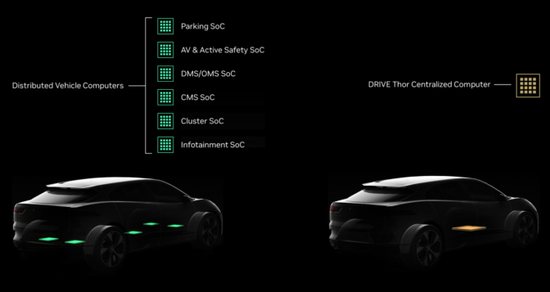 Thor chip multi-mode integration, image source NVIDIA official website
Thor chip multi-mode integration, image source NVIDIA official websiteHuang Renxun also said that the Thor chip can realize the function while reducing the cost and power consumption of the whole vehicle. After all, compared to the previous functions that can only be realized by installing several chips in the car, the Thor chip can complete it later.
When this “Spring Festival Gala”-like press conference ended, it seems to the industry that Nvidia is taking the Thor chip to declare war on both the autopilot chip and the smart cockpit chip industry at the same time. Nvidia will be so aggressive, perhaps to break the game.
Nvidia in “internal and external troubles”
In the second quarter of fiscal 2023, Nvidia handed over a not-so-good-looking report card.
According to the financial report data, NVIDIA achieved revenue of 45.210 billion yuan in the second quarter of fiscal year 2023, a year-on-year increase of 3.03%, but compared with the double-digit year-on-year increase in the previous quarter, there is a clear slowdown; The previous growth turned to a decline of 19.11%, which is also its second month-on-month decline since the second quarter of fiscal 2021.
Compared with revenue, the performance of net profit is even more dismal. In the second quarter of fiscal 2023, Nvidia recorded a net loss of 4.424 billion yuan, which fell by 59.46% month-on-month and even reached 72.37% year-on-year.
It is worth noting that Nvidia’s net profit has both declined year-on-year and month-on-month, which has begun in the last quarter. In the first quarter of fiscal year 2023, Nvidia recorded a net profit of 10.707 billion yuan, down 15.38% year-on-year and 46.12% month-on-month.
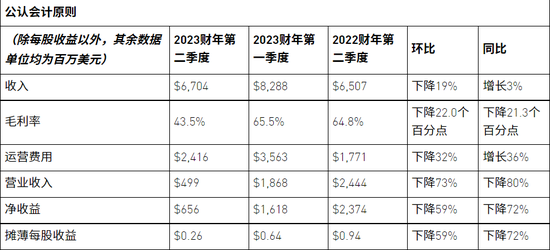 Some of Nvidia’s fiscal 2023 second quarter results, screenshots from Nvidia’s official website
Some of Nvidia’s fiscal 2023 second quarter results, screenshots from Nvidia’s official websiteCombining the performance data in the first two quarters of fiscal 2023, it can be seen that Nvidia’s revenue has also fallen into the predicament of a month-on-month decline in the second quarter while the decline in net profit continues to expand.
The reason why Nvidia fell into such a decline in performance may be some clues from the performance of its main business.
Since the establishment of Nvidia, the gaming GPU and related product business has been its most important business, and this business has continued to maintain quarterly revenue growth. However, this favorable situation will change from the second quarter of fiscal 2023.
In the second quarter of fiscal 2023, Nvidia’s game business achieved revenue of 13.8 billion yuan, a year-on-year decrease of 30.3% compared with the same period in fiscal 2022, and a decrease of 42.5% from the previous quarter’s 24 billion yuan. For the sharp decline in revenue from this business, Nvidia explained that it was due to the decline in sales of game product terminals, mainly PCs.
Nvidia CFO Kress also said on the earnings call that “global macroeconomic headwinds have led to a sudden slowdown in consumer demand for the company’s gaming products.”
In order to change the decline of this business in order to support the overall performance, Nvidia said it will work with retailers to adjust the price of game chips. According to Wired, Nvidia has indeed lowered the price of the RTX 30 series graphics cards, and the current price is about $50 lower than the previous price.
In addition to the “internal worries” of the sluggish performance of its main business, Nvidia is not absolutely safe on the autonomous driving chip track.
As mentioned above, because NVIDIA has laid out in the field of autonomous driving chips earlier, the industry’s first-mover advantage is obvious. At present, the car companies that NVIDIA cooperates with include “Weixiaoli”, mainstream car companies such as Weimar, Gaohe and Mercedes-Benz, and autonomous driving companies such as Baidu Apollo and WeRide are also its customers.
Although NVIDIA plans to launch a Thor chip with a computing power of 2,000 TOPS, NVIDIA does not have a leadership position in terms of the computing power of chips that have already been mass-produced. At present, the highest computing power chip that Nvidia has mass-produced is Orin, with a single computing power of 254 TOPS; in contrast, Huawei’s Ascend 910 chip has a single computing power of 512 TOPS.
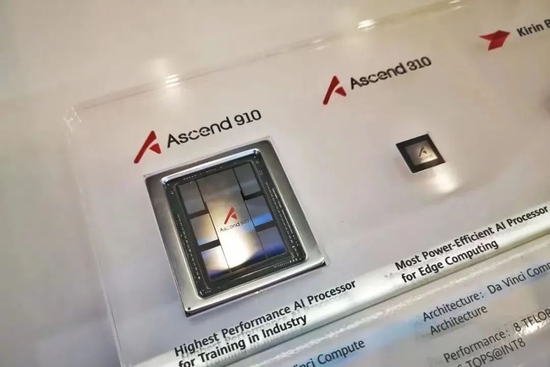 Huawei Shengteng 910 chip, source Huawei China official micro
Huawei Shengteng 910 chip, source Huawei China official microIn addition to the lack of computing power, Nvidia is also besieged by other players on the autopilot chip track.
The first competitor is Mobileye on the same track, which released three latest chip products at the CES show in January this year, EyeQ Ultra, EyeQ6 Light and EyeQ6 High, covering L1-L4 autonomous driving scenarios.
At the same time, Mobileye also announced that it will be listed in the United States by way of initial public offering (IPO) this year. From the perspective of the industry, if it goes public successfully, it will help it develop better in the future and compete with Nvidia for the market. .
While Mobileye continues to increase its weight, a number of domestic autonomous driving chip companies have also grown rapidly.
For example, Horizon, as of August this year, has more than 20 cooperative car companies, including SAIC, Great Wall and Nezha Motors, etc.; and Huawei’s chip products have also been approved by GAC Aian, Nezha Automobile, and Jihu Automobile. Equipped with Avita and other brands.
If Mobileye, Horizon and Huawei are competitors on the same track as Nvidia, then there are also many players outside the track who are quickly entering this track.
Take Qualcomm as an example. Since Qualcomm launched its first smart cockpit chip, the Snapdragon 620A in 2014, it has been continuously deploying in the field of smart cockpit chips, and has thus become a leader in the field of smart cockpit chips. But since it released its first self-driving chip Snapdragon Ride in January 2020, it has quickly entered the self-driving chip track.
Shortly after entering the field of autonomous driving chips, Qualcomm announced that it has reached cooperation with car companies such as GM, Great Wall, BMW, and Volkswagen, and will carry the Ride platform on the next-generation new cars of these car companies. Based on this, it seems in the industry that Qualcomm’s ambition to challenge Nvidia is undoubtedly revealed.
In addition to Qualcomm, car companies such as Tesla, Leapmotor, and Geely also followed closely into the autopilot chip track.
Tesla has started the research and development of FSD chips for autonomous driving as early as 2016, and achieved mass production and installation of this chip in 2019; Leapmotor’s self-developed “Lingxin 01” intelligent driving chip will be available in 2021. With the delivery of Leapmotor C11, it has officially entered mass production; the first intelligent driving chip “Dragon Eagle No. 1” under Geely’s investment in Sintech is also expected to be installed on the car within this year.
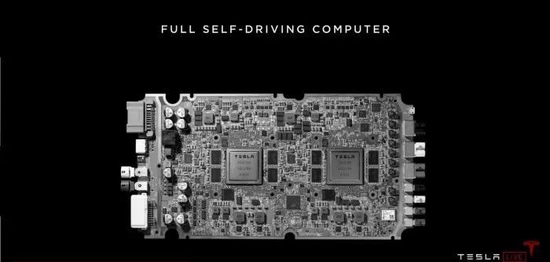 Tesla FSD chip, picture source Tesla official micro
Tesla FSD chip, picture source Tesla official microIn addition to these car companies, Weilai, Changan, Ideal and GM and other car companies have also announced their own plans to develop self-driving chips in the past two years.
From this point of view, Nvidia is currently in the quagmire of “internal and external troubles” due to sluggish performance and intensified industry competition, and the Thor chip recently released in a high-profile manner may have been regarded by Nvidia as a “rope of hope” to drag itself out of the quagmire. .
Thor chip, can it drag Nvidia out of the quagmire?
To discuss this topic, whether the Thor chip has the strength becomes the key.
As mentioned above, the computing power of a single Thor chip is as high as 2000 TOPS. It is undeniable that Nvidia has occupied the dominant position in the entire chip industry in this regard. It will attract many car companies to carry this chip, because there is another promotional selling point in the sales process.
But it should be noted that, in addition to computing power, cost, power consumption, ease of use (or ease of development) and isomorphism (compatibility of the chip with other systems) determine whether a chip can finally be used in the car. Equal dimensions are also considered by car companies.
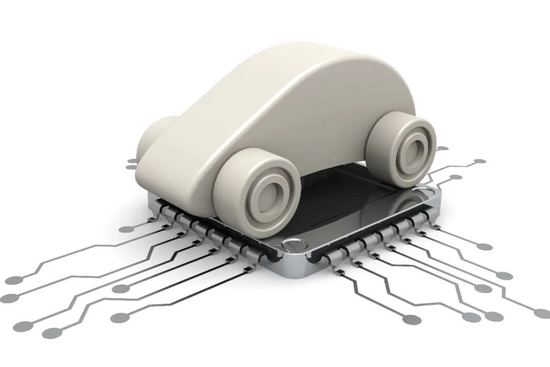
Let’s look at cost first. Taking the Orin chip that NVIDIA has already mass-produced as an example, its single price has reached 300-500 US dollars (equivalent to about 2100-3500 yuan). According to Wang Xianbin of Gasgoo Automotive Research Institute, the price of its next-generation Thor chip is likely to be higher.
In addition to cost, the power consumption of the chip is also a key factor of concern for all new energy vehicle companies. After all, differences in this aspect will greatly affect the cruising range performance of a model. In this regard, Nvidia has been criticized in the industry.
Take the Orin chip as an example. According to the data released by Tongxi Capital, the power consumption of a single Orin chip is 65W. In comparison, the power consumption of a single Orin chip is 10W and 15W respectively for Mobileye’s EyeQ5 and Horizon’s Journey 5. The gap is obvious.
According to Wired, Texas Instruments’ TDA4VM chip can perform high-performance ADAS operations without active cooling at a power consumption and performance efficiency of 5-20W.
When Nvidia introduced the Thor chip, it did not announce its single power consumption, but simply stated that it would further reduce power consumption. However, in the opinion of Liu Ming, a senior expert in the autopilot chip industry, since the Thor chip has multiple scenarios for both autonomous driving and smart cockpits Computing and analysis capabilities, so the power consumption will be higher than Orin, and it will not take much advantage.
In terms of ease of use, it is simply whether car companies can further develop functions based on chips. Among them, Mobileye’s “black box” delivery has always been complained by the industry, in other words, its cooperation with car companies has always been relatively closed and conservative. Not worth $50 billion? This is explained in detail in the article.
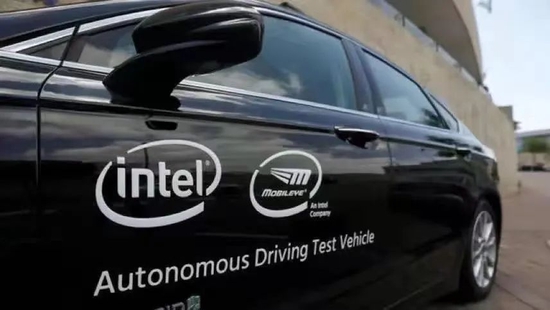 Image source Intel China official micro
Image source Intel China official microIn contrast, NVIDIA’s cooperation with car companies is more open and flexible. For example, it will provide car companies with a series of autonomous driving chip development kits to help car companies achieve personalized solutions. Based on this, the cooperation model between NVIDIA and car companies has also been imitated and learned by chip companies such as Horizon, Black Sesame and Huawei.
Finally, let’s look at the isomorphism of the chip.
For a smart car, the chip belongs to the hardware system. In order for the chip to exert its own computing and control capabilities, it needs to cooperate with the software system inside the vehicle. As mentioned above, the Thor chip launched by NVIDIA is a central domain controller type integrated chip that integrates the calculation and control of the autonomous driving domain and the intelligent cockpit domain.
Although this approach is relatively advanced in the industry, in Wang Xianbin’s view, since the autonomous driving domain and the smart cockpit domain belong to two systems, the former has higher requirements for functional safety than the latter, so NVIDIA’s Thor chip For example, how to integrate with the underlying basic software and operating system integration of the central centralized domain control architecture or central domain + regional domain architecture of car companies, and how to balance the technical and functional requirements of the autonomous driving functional domain and the cockpit domain are a huge challenge. .
“Compared to the autonomous driving domain, the smart cockpit domain will pay more attention to the coupling with the software system. In this regard, Qualcomm has accumulated a lot of experience with previous years of cooperation with car companies. Therefore, when the Thor chip is mass-produced in 2025, , it is difficult to compete with Qualcomm in the field of smart cockpit chips.” Liu Ming said to Connected Travel.
In addition to the above factors, although NVIDIA pioneered the Thor chip that spans the autonomous driving domain and the smart cockpit domain, a central domain controller chip like this has become the development trend of future chips.
According to the forecast of Guotai Junan Securities, after 2030, the main control chip in the autonomous driving domain and the intelligent cockpit domain will be integrated into the central computing chip, so as to further improve the computing efficiency and reduce the manufacturing cost through the integration of the chip.
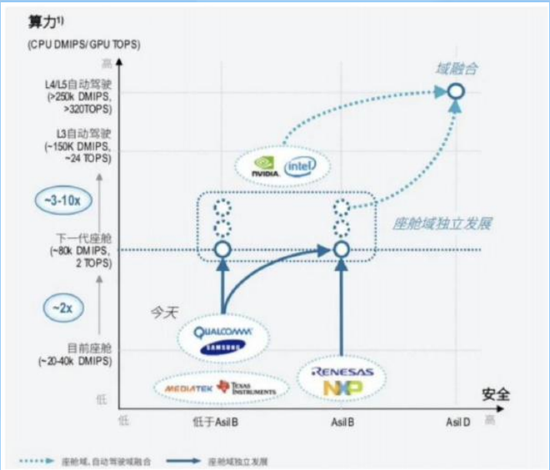 Tuyuan Guotai Junan Securities
Tuyuan Guotai Junan SecuritiesBased on this trend, from the perspective of the industry, there is a high probability that chip companies such as Qualcomm and Horizon will also develop towards the technical path of central domain controller chips in the future, and Nvidia may be challenged by many chip companies by then.
To sum up, although NVIDIA’s Thor chip has certain advantages in terms of computing power and flexibility, it has certain deficiencies and inconsistencies in terms of cost, power consumption control, and adaptation to autonomous driving domain and intelligent cockpit domain systems. Certainty, so to determine whether the chip can help Nvidia gain industry advantages and gain new growth points, it will not be determined until the chip is actually mass-produced and installed.
Before that, for Nvidia, rather than focusing on whether it can take advantage of the Thor chip in the industry, it may be more necessary to find a way to curb the decline of its own performance as soon as possible. After all, only by solving the “internal worries” can we maintain our own advantages in the future chip battlefield.
(The header image of this article comes from NVIDIA’s official website, and Liu Ming is a pseudonym in the article.)

This article is reproduced from: http://finance.sina.com.cn/tech/csj/2022-09-23/doc-imqqsmrp0179574.shtml
This site is for inclusion only, and the copyright belongs to the original author.